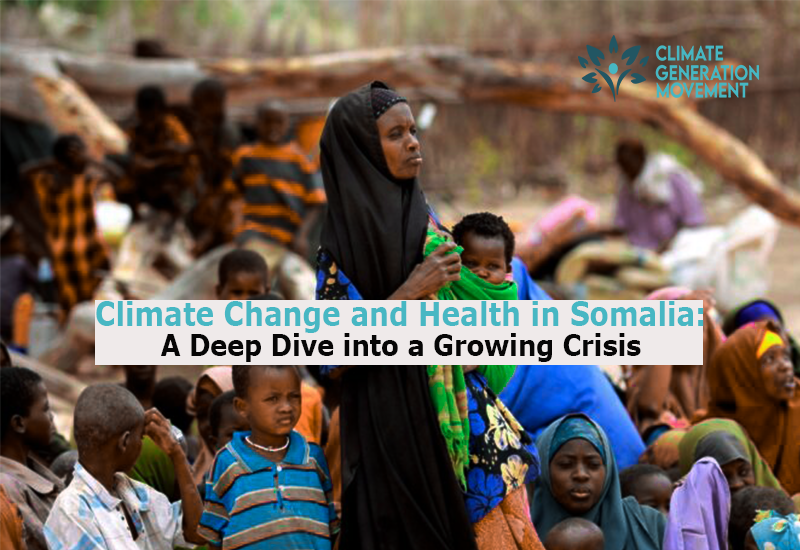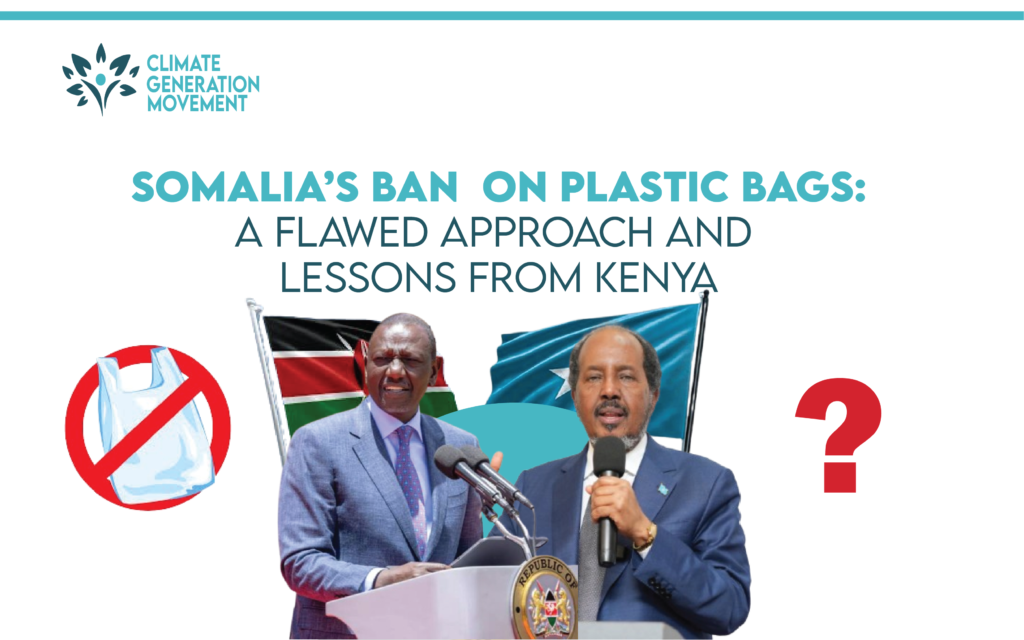Somalia finds itself at a critical juncture where climate change is no longer a distant threat but an immediate and escalating reality. The country’s fragile ecosystems, combined with socio-political instability and widespread poverty, magnify the vulnerability of its population to climate-induced health crises. Increasingly erratic weather patterns, including severe droughts and catastrophic floods, have direct and indirect effects on health outcomes, undermining food security, water availability, and disease control efforts. Understanding the multifaceted impacts of climate change on Somalia’s health system and vulnerable populations is essential for developing effective mitigation and adaptation strategies that can save lives and build resilience.
Understanding Somalia’s Climate Context: An Overview
Somalia’s climate is predominantly arid and semi-arid, with highly variable rainfall averaging between 200 and 500 mm annually — a narrow margin that leaves little room for error. The economy and livelihoods of about 70% of the population rely on pastoralism and rain-fed agriculture, making them especially sensitive to climate variability. Rainfall is seasonal but increasingly unpredictable, disrupting traditional farming and herding cycles.
Recent Climate Events:
- The Horn of Africa drought from 2020 to 2022 is considered one of the worst in 40 years, severely impacting Somalia’s water and food systems.
- In 2023, devastating floods affected over 1 million people, causing massive displacement and damage to infrastructure including health clinics, roads, and schools.
- These extremes are happening in shorter cycles, allowing little recovery time.
Climate Trends and Projections:
- Average temperatures in Somalia have risen by approximately 1.2°C since the 1960s, higher than the global average.
- Rainfall patterns are becoming more erratic — the rainy seasons (Gu and Deyr) are shorter and less reliable.
- Climate models predict an increase in the frequency and intensity of droughts and floods through 2050, alongside rising sea levels threatening coastal communities.
- These changes aggravate water scarcity; currently, only about 52% of the population has access to safe drinking water.
Health Implications of Climate Change: Detailed Analysis
1. Increased Mortality and Morbidity
A pivotal WHO study (2023) estimates that drought-related factors led to approximately 71,100 excess deaths between 2022 and 2024. Of these, an estimated 40% were children under the age of five, highlighting the severe vulnerability of young children to dehydration, malnutrition, and infectious diseases. The lack of reliable healthcare access during extreme weather events compounds mortality rates.
2. Infectious Disease Outbreaks
Flooding events deteriorate water quality by contaminating drinking water sources with fecal matter and pathogens, leading to widespread outbreaks of waterborne diseases such as cholera and typhoid fever. Somalia experiences seasonal cholera outbreaks, with the 2023 flood-related epidemic infecting over 50,000 people. Malaria transmission also spikes due to increased mosquito breeding grounds in stagnant water post-flooding. Meanwhile, measles outbreaks occur more frequently due to disrupted vaccination campaigns caused by displacement and health service interruptions.
3. Malnutrition Crisis
Drought-induced crop failures and livestock deaths precipitate a chronic food insecurity crisis. According to UNICEF, Somalia ranks 4th globally in terms of children’s vulnerability to climate shocks, with approximately 1.5 million children under five suffering from acute malnutrition in 2024. Malnutrition weakens immune defenses, making children more susceptible to disease and death. Chronic food shortages and economic instability have also led to increased reliance on aid, yet humanitarian access remains hampered by insecurity and poor infrastructure.
4. Mental Health and Social Impacts
Climate change’s psychological toll is significant but underreported. Displacement, loss of livelihoods, and uncertainty lead to widespread stress, anxiety, and depression. The Somalia Health Cluster reports that mental health services are severely underfunded, with less than 5% of health facilities providing psychosocial support. Additionally, gender-based violence escalates in displacement settings, disproportionately affecting women and girls.
Vulnerable Groups at Higher Risk: A Closer Look
- Children: Immune system immaturity and high nutritional needs render children highly susceptible to disease and death during climate shocks.
- Women: Maternal mortality rates increase during droughts and floods due to reduced access to prenatal and emergency obstetric care. Women also face greater exposure to violence, especially in displaced populations.
- Internally Displaced Persons (IDPs): Somalia hosts over 2.9 million IDPs, many living in overcrowded camps with poor water, sanitation, and healthcare. These conditions heighten the risk of infectious disease outbreaks and malnutrition, while access to health services remains inconsistent.
Challenges Facing Somalia’s Health System
Somalia’s health infrastructure is fragile and unevenly distributed. Conflict and governance issues have left large gaps in service provision:
- Only 52% of Somalis have access to clean water, and less than half have access to improved sanitation.
- The health workforce density is estimated at 0.5 per 1,000 population, far below WHO’s recommended minimum of 4.5.
- Essential medicine supply chains are frequently disrupted during climate disasters, and many clinics lack electricity or adequate refrigeration for vaccines.
- Health data systems are weak; climate and health surveillance remain siloed, limiting proactive response capabilities.
- The cumulative effect is inadequate preparedness and response to climate-exacerbated health emergencies.
Strategic Recommendations: Building Resilience
1. Strengthening Surveillance and Early Warning Systems
Integrate climate monitoring with health surveillance to detect disease outbreaks and nutrition crises early. Implement mobile data reporting platforms for real-time alerts. Enhance coordination between meteorological agencies, health ministries, and humanitarian actors to enable timely interventions.
2. Building Climate-Resilient Health Infrastructure
Invest in water, sanitation, and hygiene (WASH) facilities, prioritizing rural and displacement settings. Construct flood-resistant health centers and stockpile essential medicines ahead of high-risk periods. Improve cold chain infrastructure to ensure vaccine efficacy despite power outages.
3. Enhancing Food Security and Nutrition Programs
Support drought-tolerant crops, sustainable pastoralist practices, and diversification of income sources to improve food security. Scale up community-based nutrition screening and treatment programs, including ready-to-use therapeutic foods (RUTF) for severe acute malnutrition.
4. Policy Integration and Capacity Building
Embed climate adaptation into national health and disaster risk management policies. Train health workers in recognizing and managing climate-related illnesses. Promote multi-sectoral coordination between health, agriculture, water, and environment ministries.
5. Community Engagement and Education
Empower communities through climate adaptation education, hygiene promotion, and nutrition awareness. Encourage community-based early warning systems and participation in local resilience planning to ensure solutions meet specific needs.
Conclusion: Urgent Action Required to Protect Lives
The intersection of climate change and health in Somalia presents a multi-dimensional crisis with immediate and long-term consequences. Millions of lives particularly those of children, women, and displaced populations are at risk unless urgent, coordinated action is taken. Strengthening health systems, building climate resilience, and integrating policies across sectors are critical steps forward. International support, adequate financing, and community empowerment are essential to mitigate worsening humanitarian and health emergencies. Somalia’s future depends on effective responses that recognize climate change as a fundamental driver of health vulnerabilities.
———————————————————————–
By Abdishakur Daaha, Director of Climate Generation Movement



